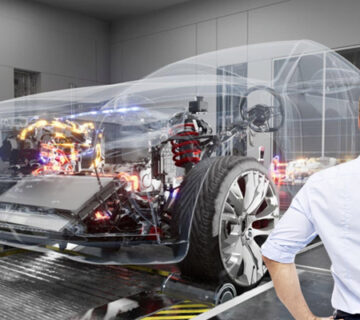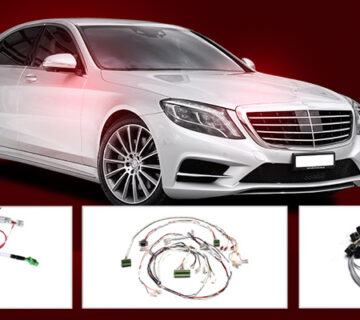The tension between the technology that automakers strive to incorporate into their vehicles, and the size, weight, and packaging requirements for wiring harnesses is on the rise. Some examples of current technological advances that are contributing to the dilemma include electrification of vehicles, autonomous vehicles, and Integrated Artificial Intelligence.
Size and weight issues in electric vehicles
The range of a car is a crucial competitive advantage for buyers of electric vehicles. The better a vehicle’s range on a single charge, the more miles it can travel. But, minimizing weight in an electric vehicle is essential to bringing a competitive and profitable car to market because vehicle mass is a critical factor in determining a vehicle’s range. However, as a result of the additional electrical wiring and other electronic components needed for new car technology, the vehicle’s weight increases. Compared to an internal combustion engine powertrain, the inclusion of the electric powertrain alone results in an increase in weight of around 30%! Further, for autonomous driving to be possible, numerous hardware redundancies and fail-safe features must be added. This is done to avoid single points of failure that can unintentionally deactivate the autonomous system. System redundancies are essential because if the driver isn’t paying attention or isn’t actively engaged in driving and steering, unanticipated failures could result in a crash. However, by duplicating networks, powerlines, and electronic control units, these safety redundancies can also significantly add to the weight (and cost) of the wiring harness.
If all of the above wasn’t enough, cars are also becoming a tool for entertainment and communications, with the incorporation of screens and displays into virtually every interior surface of the vehicle. As a part of the internet of things and internet of vehicles, cars are also becoming increasingly networked, making them a smooth interface between our connected lives at home and at work. Because of the need to link all of this technology, new networks are being incorporated, which again add to the problem of the wiring harnesses becoming bulkier, heavier, more expensive, and more complicated.
In general, today’s modern automobiles house around 40 separate wire harnesses, which total up to around 3000 wires and 700 connectors! These wires could add up to being more than 4 km long and 60 kg heavy. Moreover, in order to incorporate all of what we’ve mentioned above, high baud rate networks with specialized wiring would be required, which again will need more than 70 specialty cables, including high-speed data cables, USB cables, coax cables, and more. This again adds up a significant amount of weight to the vehicle.
The possible solutions
With all of the above to be added into every car, how can you expect to manage adding every technology, while staying on the minimum of size, weight, and packaging requirements of wiring harnesses!?
- One solution here is to use ultra-small diameter wiring. But, this is not so easy. The market hasn’t yet been able to produce enough terminal alternatives to replace all the current terminals that can crimp to such small wiring diameter. And, switching to ultra-small diameter wiring on a broad scale would also require a complex subset of connectors and pins.
- Another solution is to find substitutes for specialty cables that can help the wiring harnesses to be lighter, cheaper, and have smaller bundle sizes. In the future, popular standards that support higher baud rates, while using affordable twisted pair cables may offer an easier and less dangerous upgrade path. In contrast, discovering methods to multiplex these signals onto a single, shared speciality wire and allowing various devices to connect to these cables will have the same result: lowered wiring harness weight, expense, and complexity.
- Finally, advanced software tools can be used to optimize module positions, and find any modules that can be integrated to save weight and money, and reduce bundle sizes. Using such software, the best system architecture can be selected by comparing different layouts for their effects on wiring harness weight, cost, and bundle diameter.
While all of the above solutions seem challenging and difficult to integrate, nothing is always impossible. We’re confident that technology will soon make it possible to fit every extra function into an electric car while still dealing with the weight and size issues. Let’s keep our fingers crossed as we wait for our engineers to come up with the ideal solution, which will enable automobile wiring harness manufacturing companies in India to come up with lightweight and ultra-small diameter automotive wire harnesses for such advanced-technology vehicles.




